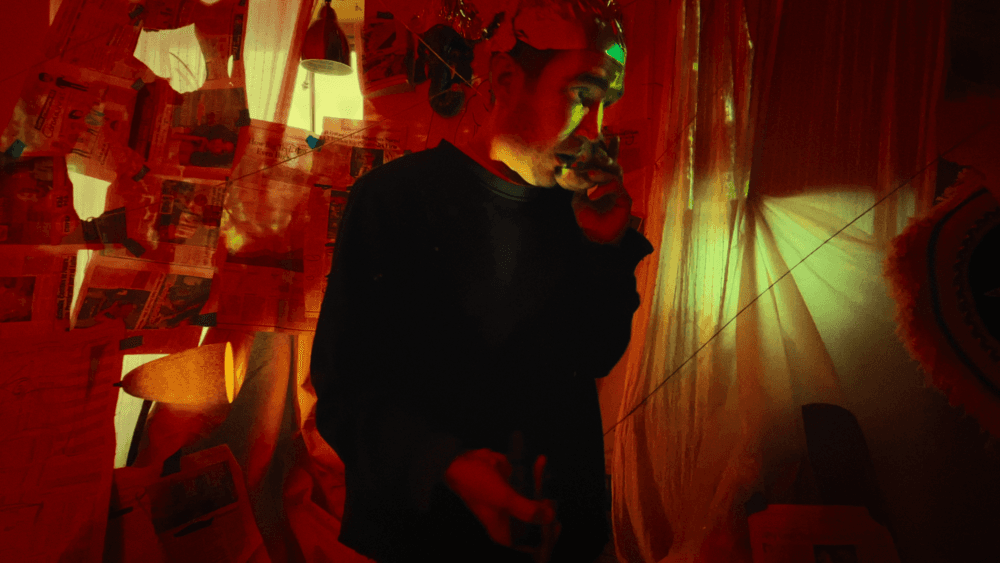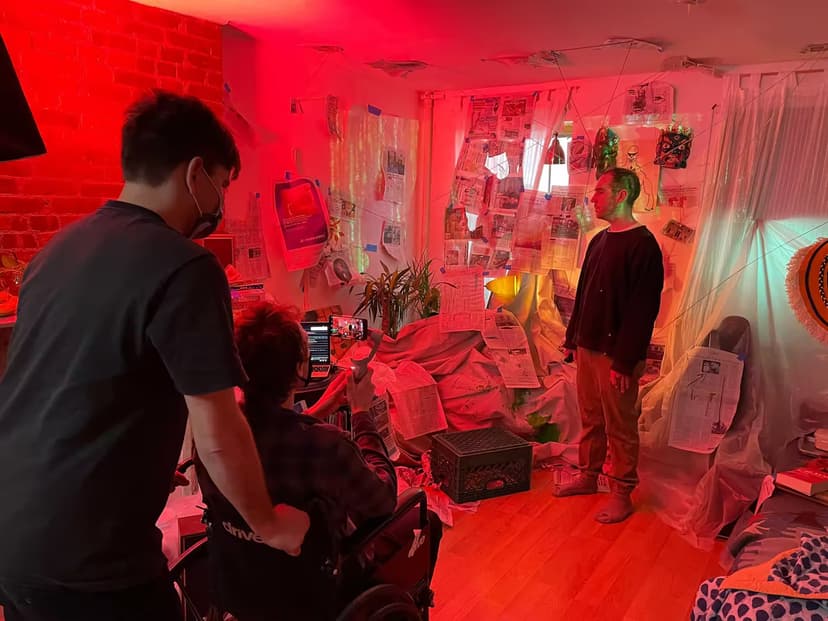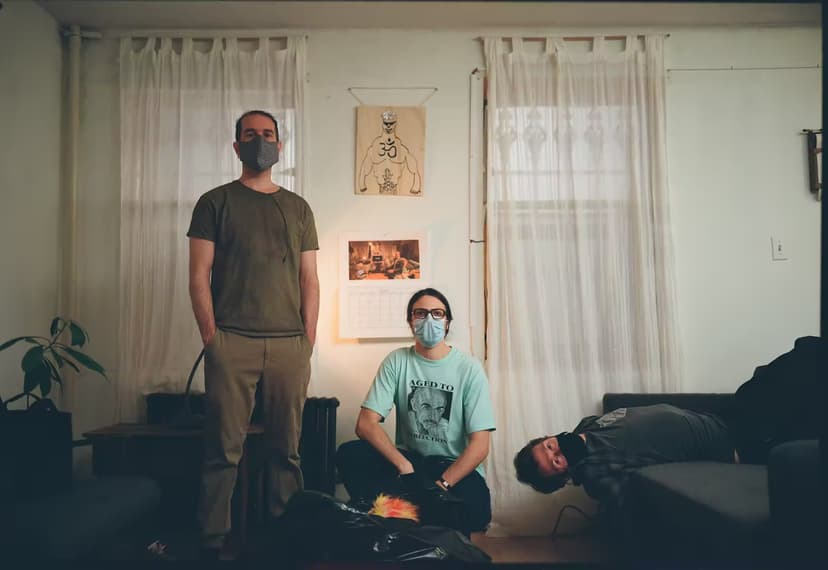COLIN Read is Comfortable with Kismet
24 August 2023
Written by
Adobe Creative Cloud Blog
Little is traditional about director Colin Read’s filmmaking style, but it’s not as if he planned it that way. He’s just comfortable with kismet.

“I came at filmmaking from multiple approaches, none of which were designed to lead me to filmmaking, but they converged in a way that suddenly made me a filmmaker,” laughs Colin Read. “One of the things that kicked it all off was skateboarding. I’ve skated my whole life, and I was a skate filmer for a long time, even though I didn’t intend to become one.”
Tip: Just because you feel like a fraud, doesn’t mean you are one.
A serious injury sidelined the Brooklyn-based creative and made him “the guy holding the camera” while he recuperated. He healed, but he continued to hold the camera. Read’s passion led to him travelling around with skate companies as a videographer and editor, creating films that began to garner him acclaim.
“Everything I know, I know from being on set or on location,” he says.
“After I emerged as director, out of the skateboarding depths, I didn’t sit back. I would jump onto other friends’ sets in whatever capacity they needed me so I could learn the various skills first-hand.”

His 2016 skating-focused piece 'Spirit Quest' raised his profile as a filmmaker and allowed Read to call on his education, an MFA in creative writing, to add more of a narrative to his work. Things started to change.
“People started reaching out to me for work, to make music videos and that kind of thing, and I was terrified,” he recalls.
“I remember showing up at the set of my first big job and being horrified that people were going to find out I was a fraud and that I had no idea what I was doing. I felt like I had no place directing. I was amazed when I found that the various skills I had amassed meant I genuinely knew what I was doing. The only one that didn’t seem to know that was me.”
Tip: Embrace fear of the unknown to ward off creative stagnation.
The fear is something the now 32-year-old Read considers to be a “de facto part of the process,” saying it never goes away. He’s baked that into his creative style, explaining, “I love to step into the unknown and try to make something that I’ve never done before. Every single thing I’ve ever made has, in some way, been a learning experience.”
Read believes that feeling the fear prevents creative stagnation. To avoid repeating himself stylistically, he goes deep into his initial concept and finds new ways to tell the story.
That’s a key reason why he considers his work to be “pretty eclectic. It doesn’t have one big identifiable stylistic aspect, but more of an amalgam of a bunch of different little ideas,” he explains.

Read’s Pocket Film, Hobby, is a prime example. The Pocket Films brief revolved around change and progress, and Read felt the best way to fulfil it was to reflect on what he called his own “half-baked efforts” during the coronavirus pandemic lockdown to find fulfilment and a sense of purpose by trying different hobbies.
Read loves films and videos “where you show the audience something they have never seen before, but you are also letting them in on the joke.” He used this unorthodox approach in the Weezer music video “All My Favorite Songs.” “The effects were all done practically in-camera,” he recalls. “The main character in the video was transported between different places through a computer screen. Once the effect happens, the viewer knows what happened, but it’s no less effective because that initial surprise got them invested.”
Read wanted to do something similar with Hobby, but on an extremely small footprint and in one location. The scaling down impacted Read’s creative process. “I left each scene pretty loose. I wrote a really basic script and included what each sequential scene would be. The actor, who is also my good friend, Dylan Kammerer, would riff on it, and we’d work together to get where we needed it to be. We shot it in his actual apartment.”
Tip: With a phone as your camera, production can move quickly.
Read and his creative team planted inside jokes in each scene, including professional filmmaking gear and real production lights. The equipment was only props because the team filmed the piece using an iPhone on a DJI OM 4 iPhone gimbal, with Read in a wheelchair that served as a makeshift dolly.
“I’ve never tried to shoot anything on an iPhone, and I was impressed that you could get pretty good results in-camera,” he says. And with the phone as camera, “production moves so immediately and quickly. It doesn’t take 15 minutes to swap lenses and move the tripod. You can walk somewhere else with the phone in your hand. It was fun, and it felt freeing in that way.”
Read shot Hobby in 4K, enabling the director to punch in cleanly in post-production when needed. He used After Effects’ Warp Stabilizer to “selectively choose and delete my track points for moving objects, like the actor walking in the scene, so the only ones left were of the stationary background.”
Read also found it extremely helpful to throw footage from the iPhone into his Premiere Pro project and immediately make an assembly cut and slip end frames to see whether it exactly matched the still frame at the beginning of the next shot. “We’d know right away if something would cut together or not. It was like editing in-camera.”
Tip: You don’t have problems; you have situations.
Adapting to a new way of filmmaking in a limited environment, years into acareer he initially hadn’t planned to embark on, Read’s reminded of advice he was given years ago: “You don’t have problems; you have situations.’ Just be aware that you’re going to have situations on every single project. No matter how much prep work you have, things pop up that require rapid decision-making.”
“If you refuse to adapt, and you try to force through something that isn’t working, that’s when failure happens.”
This article was first published by Adobe Creative Cloud.